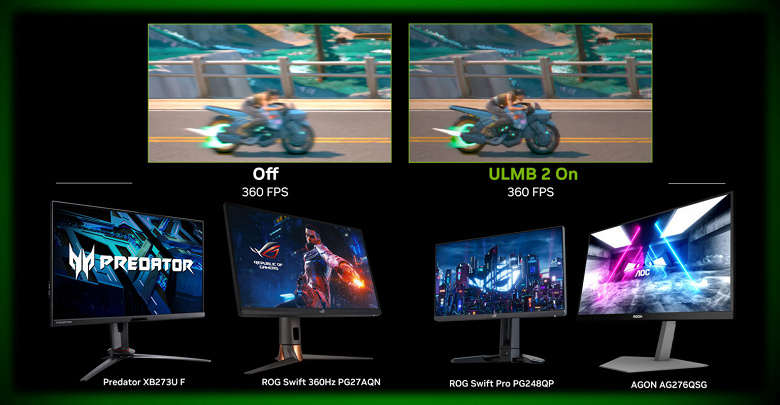The specified frequency is effective, not real
Nvidia has introduced G-Sync Ultra Low Motion Blur 2 (ULMB 2) technology, which should make the image on the monitor even clearer.

Nvidia itself speaks of an effective motion clarity frequency of over 1000 Hz, and this should not be confused with frame rate, since there are simply no panels on the market with such a frame rate.
Technologically, ULMB 2 is about the same as the original ULMB technology, which appeared in 2015 and, due to the shortcomings of monitors of those times, did not gain popularity. We are talking about backlight strobing technology, which lies in the fact that in ULMB 2 the monitor backlight turns on only when each pixel has the correct color value. The idea is to not show the pixel transition, but only show them when their color is accurate. To solve the problems with this approach, Nvidia figured out how to control the response time depending on where the vertical base is. Nvidia calls this “vertical dependent overdrive”.
ULMB 2 technology introduced
As a result, the very value of effective motion clarity according to the Nvidia formula turns out to be four times higher than the actual frame rate of the monitor. That is, in the case of a panel with a frame rate of 360 Hz, the Nvidia indicator will be 1440 Hz. The company claims that such a monitor will offer the same smoothness and clarity as a non-ULMB 2 monitor with a true 1440Hz frame rate.
The technology is not only presented, but already available. At least two monitor models already support it: Acer Predator XB273U F and Asus ROG Swift 360Hz PG27AQN. They will be joined soon by the 540Hz Asus ROG Swift Pro PG248QP and AOC Agon AG276QSG G-Sync. The effective frequency indicator of the first due to ULMB 2 will be 2160 Hz.




